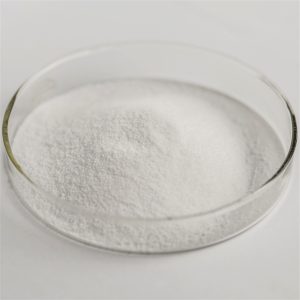
DL-Tartaric Acid

Specifications
| Item | Index |
| Assay(after drying, as C4H6O6) | 99.5% Min |
| Melting Point | 200℃~206 ℃ |
| Heavy Metals(as Pb) | 0.001% Max |
| Residue On Ignition | 0.10% Max |
| Loss on Drying | 0.5% Max |
| Arsenic(as As) | 0.0002% Max |
| Readily Oxidizable Substances | Qualified |
| Sulfate(SO4) | 0.04% Max |
Packing & Storage
| Packing | in 25kg bag |
| Storage | 20℃, 2 years. |
| Shipping | Room temperature in China; may vary elsewhere |
Free Quote
For samples, pricing, or more information, please call us at 0086-25-52397805 or mail to info@liwei-chem.com or fill out the following form. We will respond to you as soon as possible.
Tel: 0086-25-52397805
E-mail: info@liwei-chem.com
E-mail: sophiahoney247@gmail.com


General Information
| Common Names | DL-Tartaric Acid | ||
| Structure |  | ||
| CAS No. | 133-37-9, 138508-61-9 | Boiling Point (℃) | 399.3±42.0 °C |
| Molecular Weight | 150.087 | Melting Point (℃) | 200-206ºC |
| Appearance | White powder | Vapor Specific Gravity | 1.9±0.1 g/cm3 |
| HS Code | 2918120000 | Flash Point (℃) | 209.4±24.4 °C |
| Solubility | soluble in water, methanol, ethanol, glycerol and other polar solvents, slightly soluble in ether, partially soluble in chloroform | Autoignition Temperature (℃) | |
| Safety Phrases | |||
| RIDADR | |||
| WGK Germany | |||
| Packaging Group | |||
| Hazard Class | |||
| SYMPTOMS | PREVENTION | FIRST AID | |
| Inhalation | Cough. Sore throat. | Use local exhaust or breathing protection. | Fresh air, rest. |
| Skin | Redness. Burning sensation. Itching. | Protective gloves. | Remove contaminated clothes. Rinse and then wash skin with water and soap. |
| Eyes | Redness. Pain. | Wear safety goggles. | First rinse with plenty of water for several minutes (remove contact lenses if easily possible), then refer for medical attention. |
| Ingestion | Abdominal pain. Nausea. Vomiting. | Do not eat, drink, or smoke during work. Wash hands before eating. | Rinse mouth. Induce vomiting (ONLY IN CONSCIOUS PERSONS!). Refer for medical attention . |

Frequently Asked Questions
DL-tartaric acid colour and properties
The appearance of DL-tartaric acid is a colourless crystal or white crystalline powder, odourless, sour, and stable in air. It is a mixture of equal amounts of D- and L-tartaric acids, often containing one or two crystallisation waters, and loses crystallisation water when heated to 100°C. The density of DL-tartaric acid is 1.697, its water solubility is 20.6%, the solubility in ether is about 1%, and the solubility in ethanol is 5.01%.
The role of DL-tartaric acid
DL-tartaric acid is widely used in food, medicine, chemical, light, and other industries. In the food industry, tartaric acid is an excellent sour agent, its sourness is 1.2-1.3 times that of citric acid, and its flavour is unique.
Specific uses of DL-tartaric acid
According to the hygienic standards for food additives in my country, DL-tartaric acid is mainly used in combination with citric acid, malic acid, etc., and can be used in beverages, cans, jams, candies, etc. Since tartaric acid has characteristics that other edible organic acids do not have when used as a raw material, such as baking powder, DL-tartaric acid can also be used as a chelating agent, antioxidant synergist, flavour enhancer, and quick-acting leavening agent in some occasions. Tartaric acid can be used as a pharmaceutical intermediate and high-efficiency resolution agent in the pharmaceutical industry. DL-tartaric acid can be used in the chemical industry to produce tartrates and tartrate esters. It can be used as a cleaning agent and polishing agent for metal surfaces. DL-tartaric acid In the textile industry, tartaric acid and tannin can be used as dyeing agent for acid dyes. In addition, tartaric acid also has critical applications in leather, cement, photographic development and other industries.
